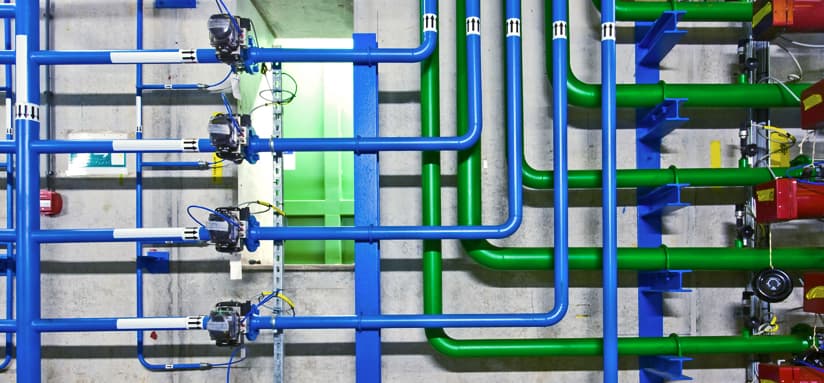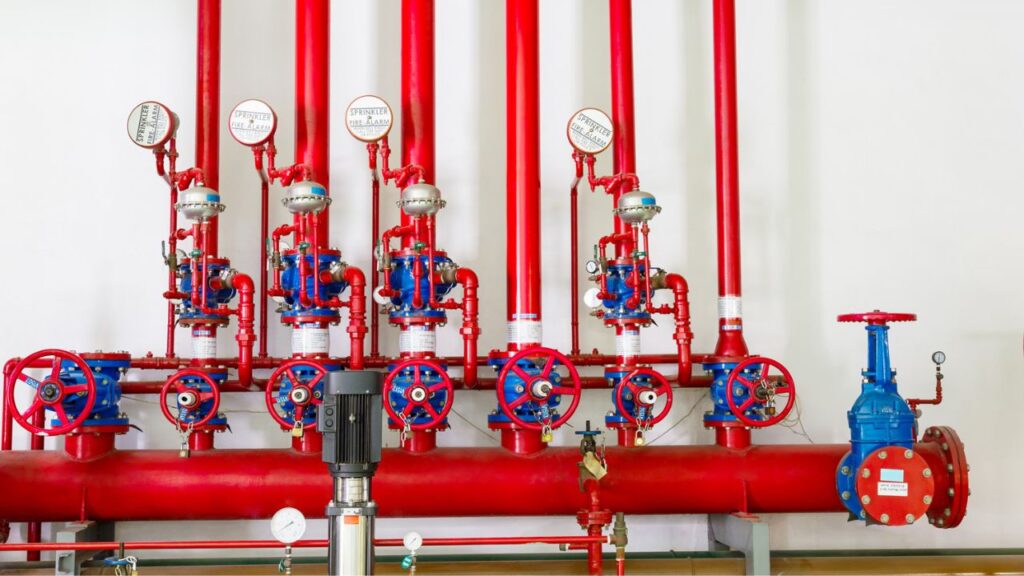A Comprehensive Guide to Your House's Plumbing System Anatomy
A Comprehensive Guide to Your House's Plumbing System Anatomy
Blog Article
They are making a few great annotation related to The Inner Workings of Your Home's Plumbing as a whole in this great article underneath.

Understanding just how your home's plumbing system functions is necessary for each home owner. From supplying tidy water for alcohol consumption, cooking, and bathing to securely getting rid of wastewater, a properly maintained pipes system is important for your household's health and wellness and comfort. In this comprehensive overview, we'll check out the elaborate network that composes your home's pipes and offer tips on upkeep, upgrades, and dealing with typical issues.
Intro
Your home's plumbing system is greater than just a network of pipes; it's a complex system that guarantees you have accessibility to tidy water and reliable wastewater elimination. Recognizing its parts and how they interact can help you stop costly repair services and make certain everything runs smoothly.
Fundamental Parts of a Plumbing System
Pipes and Tubes
At the heart of your plumbing system are the pipelines and tubing that lug water throughout your home. These can be made from various products such as copper, PVC, or PEX, each with its benefits in regards to toughness and cost-effectiveness.
Fixtures: Sinks, Toilets, Showers, and so on.
Fixtures like sinks, commodes, showers, and bath tubs are where water is utilized in your house. Comprehending exactly how these fixtures connect to the plumbing system assists in detecting troubles and preparing upgrades.
Shutoffs and Shut-off Points
Valves regulate the circulation of water in your plumbing system. Shut-off valves are crucial throughout emergency situations or when you need to make fixings, enabling you to isolate parts of the system without disrupting water circulation to the entire residence.
Supply Of Water System
Main Water Line
The major water line links your home to the municipal water or a private well. It's where water enters your home and is distributed to numerous components.
Water Meter and Pressure Regulatory Authority
The water meter measures your water use, while a stress regulator guarantees that water streams at a safe pressure throughout your home's pipes system, preventing damage to pipelines and components.
Cold Water vs. Hot Water Lines
Comprehending the difference between cold water lines, which provide water straight from the main, and hot water lines, which lug heated water from the hot water heater, aids in troubleshooting and planning for upgrades.
Water drainage System
Drain Pipeline and Traps
Drain pipelines lug wastewater away from sinks, showers, and bathrooms to the sewage system or septic system. Catches prevent drain gases from entering your home and additionally catch debris that might create obstructions.
Air flow Pipes
Ventilation pipes enable air right into the water drainage system, preventing suction that might slow down water drainage and create catches to vacant. Correct air flow is necessary for keeping the honesty of your pipes system.
Relevance of Correct Water Drainage
Ensuring proper drain protects against back-ups and water damages. Routinely cleaning up drains pipes and keeping catches can prevent expensive repair services and extend the life of your pipes system.
Water Heating Unit
Sorts Of Hot Water Heater
Hot water heater can be tankless or standard tank-style. Tankless heaters warmth water as needed, while storage tanks keep warmed water for instant usage.
Upgrading Your Pipes System
Reasons for Upgrading
Updating to water-efficient fixtures or changing old pipes can enhance water quality, minimize water bills, and boost the value of your home.
Modern Plumbing Technologies and Their Advantages
Explore innovations like clever leak detectors, water-saving toilets, and energy-efficient hot water heater that can conserve cash and reduce ecological effect.
Cost Factors To Consider and ROI
Determine the upfront expenses versus long-term financial savings when thinking about pipes upgrades. Numerous upgrades pay for themselves via decreased energy expenses and less repair services.
How Water Heaters Attach to the Plumbing System
Recognizing exactly how hot water heater link to both the cold water supply and warm water distribution lines aids in identifying issues like inadequate hot water or leakages.
Maintenance Tips for Water Heaters
On a regular basis purging your water heater to get rid of sediment, examining the temperature setups, and inspecting for leakages can extend its life expectancy and boost energy effectiveness.
Typical Pipes Concerns
Leaks and Their Causes
Leaks can happen as a result of maturing pipelines, loosened installations, or high water pressure. Dealing with leaks immediately stops water damages and mold and mildew development.
Clogs and Blockages
Blockages in drains and bathrooms are commonly brought on by purging non-flushable things or a build-up of oil and hair. Using drainpipe displays and being mindful of what drops your drains can prevent clogs.
Indications of Pipes Problems to Watch For
Low water stress, slow-moving drains pipes, foul odors, or unusually high water costs are indications of potential plumbing troubles that should be dealt with immediately.
Plumbing Maintenance Tips
Routine Examinations and Checks
Schedule annual pipes inspections to catch problems early. Try to find indicators of leakages, deterioration, or mineral buildup in faucets and showerheads.
Do It Yourself Maintenance Tasks
Easy jobs like cleansing tap aerators, looking for commode leaks using dye tablets, or insulating subjected pipes in chilly climates can stop significant pipes issues.
When to Call a Professional Plumbing
Know when a plumbing issue requires professional knowledge. Attempting complex repairs without proper knowledge can lead to even more damages and greater repair service expenses.
Tips for Minimizing Water Use
Basic routines like repairing leaks promptly, taking much shorter showers, and running complete tons of laundry and dishes can conserve water and reduced your energy expenses.
Eco-Friendly Plumbing Options
Think about sustainable pipes products like bamboo for floor covering, which is durable and environment-friendly, or recycled glass for countertops.
Emergency situation Readiness
Steps to Take Throughout a Plumbing Emergency
Know where your shut-off valves are located and exactly how to turn off the water supply in case of a burst pipe or major leak.
Importance of Having Emergency Situation Calls Convenient
Maintain call details for neighborhood plumbing professionals or emergency services readily available for quick feedback throughout a plumbing crisis.
Environmental Impact and Preservation
Water-Saving Components and Home Appliances
Setting up low-flow faucets, showerheads, and toilets can significantly reduce water use without giving up performance.
DIY Emergency Fixes (When Suitable).
Short-term solutions like making use of duct tape to patch a leaking pipeline or placing a bucket under a trickling tap can reduce damage up until an expert plumbing gets here.
Verdict.
Comprehending the anatomy of your home's pipes system equips you to keep it effectively, conserving time and money on repairs. By complying with regular upkeep routines and staying informed concerning modern-day plumbing modern technologies, you can ensure your pipes system operates successfully for many years to find.
The Anatomy of Your Home s Plumbing System
Understanding the anatomy of your home s plumbing system is essential for any homeowner. It not only helps in identifying potential issues but also facilitates effective communication with professionals when repairs or upgrades are needed. Your home s plumbing system is more than just pipes and faucets; it s a complex network that ensures the efficient and hygienic flow of water in and out of your house. In this blog, we ll dissect the crucial components of your home s plumbing system. For those in Antelope Valley, Brock Plumbing is your trusted partner for all your plumbing needs, ensuring your system functions smoothly and efficiently.
Water Supply System
Main Water Line: This is where your home s plumbing system begins. The main water line connects your home to the public water supply or a private well. Pipes and Shut-off Valves: Pipes distribute water throughout your home. Shut-off valves are crucial for controlling the flow of water and making repairs without shutting off the entire system. Drainage System
Drain Pipes: These pipes carry waste and water away from sinks, toilets, and showers. Vents: Vents allow sewer gases to escape and help maintain proper pressure in the drainage pipes, ensuring efficient flow of wastewater. Traps: Every fixture has a trap, a U-shaped pipe that holds water and prevents sewer gases from entering your home. The most common is the P-trap under sinks. Fixtures and Appliances
Fixtures and appliances are the most interacted with parts of your plumbing system. They include sinks, toilets, showers, dishwashers, and washing machines. Each fixture and appliance has its own supply and drainage connection, ensuring they receive clean water and can dispose of wastewater effectively.
Water Heating System
Your water heater is a crucial component, providing hot water to various fixtures and appliances in your home. It can be tank-based or tankless, with each type having its own set of advantages and maintenance requirements. Regular maintenance is essential to ensure efficient operation and extend the lifespan of the unit.
Sump Pump
In areas prone to flooding or with high water tables, a sump pump is an essential part of the plumbing system. It s installed in the lowest part of your basement or crawlspace and pumps out water that accumulates, preventing flooding and protecting your home from water damage.
Septic System
Homes that are not connected to a municipal sewer system have a septic system and an underground wastewater treatment structure. Understanding how to maintain your septic system is crucial to prevent backups, odors, and early system failure.
Conclusion
Your home s plumbing system is a complex and essential network, ensuring the efficient and hygienic flow of water in and out of your property. Understanding its key components helps in maintaining it properly and identifying issues before they escalate into major problems. For residents in Antelope Valley, Brock Plumbing is dedicated to providing top-notch services, ensuring that every part of your plumbing system is in perfect working order. Trust our team of professionals to handle all your plumbing needs, ensuring your home remains comfortable, safe, and well-maintained.
https://brockplumbinganddrains.com/blog/the-anatomy-of-your-homes-plumbing-system/

Do you enjoy reading about Anatomy of a House: Understanding the Components? Post feedback directly below. We would be happy to see your ideas about this content. Hoping that you visit us again later on. Do you know another individual who is very much interested in the topic? Please feel free to share it. I treasure your readership.
View Website Report this page